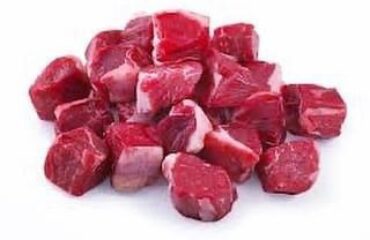Now we know that we don’t actually know where our grocery store beef is coming from let’s talk about what we *do* know.
So how are the cattle raised in the US that end up in grocery stores?
The answer is CAFO’s, or Concentrated Animal Feed Operstion’s. Aka Factory Farms.
At factory farms, animals raised for food suffer unimaginable cruelties and extreme confinement. Most factory-farmed cows never get to step foot outside during their production years, confined instead to indoor sheds that are often filthy and crowded. They’re denied the ability to graze, lie comfortably, nurse their young, or live in socially complex herds.
Cows were born to eat grass—not grains or corn. When CAFO cows are forced to eat foods that they weren’t designed to eat, things start to look pretty bleak. Sickness and nutrient deficiencies run rampant in these cows–the factories expect this, which is why massive amounts of antibiotics are kept on hand (the feed for these cows contains about 0.25 pounds of antibiotic per 15 to 20 pounds of feed1).
Antibiotics wreak havoc on the gut flora of these cows, and then do the same to you when you eat the various cuts of meat. Without healthy gut flora, dangerous strains of bacteria flourish, digestion is impaired, and deficiencies in important nutrients arise.
Because CAFO’s house so many animals in such a small space, CAFO’s produce huge amounts of animal sewage and other pollutants.
CAFO owners and operators spend millions of dollars on technologies that make it possible to produce massive quantities of milk, eggs, and meat, yet they resist investing in technologies and practices to properly treat the wastes that are by-products of this industry.
-The amount of urine and feces produced by the smallest CAFO is equivalent to the quantity of urine and feces produced by 16,000 humans. CAFO waste is usually not treated to reduce disease-causing pathogens, nor to remove chemicals, pharmaceuticals, heavy metals, or other pollutants.
-Over 168 gases are emitted from CAFO waste, including hazardous chemicals such as ammonia, hydrogen sulfide, and methane.
-Airborne particulate matter is found near CAFO’s and can carry disease-causing bacteria, fungus, or other pathogens.
-Animals frequently die in CAFO’s. Their carcasses, often in large numbers, must be dealt with.
-Infestations of flies, rats, and other vermin are commonplace around CAFO’s and therefore around CAFO neighbors.
Did I mention these factory farms run on government subsidiaries?
CAFO’s can’t survive without taxpayer subsidies. CAFO’s receive many subsidies, such as milk price support guarantees, federal EQIP money through the Farm Bill, Development Right Agreements, tax abatements, grants, bonds, even economic development funds for roads.
These taxpayer supports not only encourage the growth of this industry, they undercut the ability of traditional livestock operations to compete with CAFO’s. Without the subsidies, CAFO’s would fail financially.






